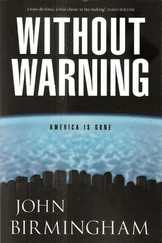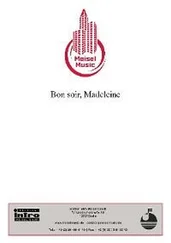During our more relaxed moments, Kim was an intriguing host, plainly trying to convey confidence and yet also quick to admit his country’s economic problems, including shortages of fertilizer and coal. He was well informed about world events, and we chatted easily about computers, environmental issues, and agriculture—he blamed the Russians for convincing the DPRK to grow corn, which he said had proved suitable only for livestock. On the subject of what life was like in the United States, he indicated no interest, perhaps thinking he had learned all he needed courtesy of Hollywood. I was relieved that Kim didn’t drink with the gusto shown by some of his generals, for during our dinners he shielded me from the demand to raise glass after glass in toasts.
On the first day, toward the end of our meeting, he invited me to what he called a “show.” This turned out to be an Olympic-scale gymnastics extravaganza held in an indoor stadium and featuring about 100,000 precisely choreographed dancing, cartwheeling, and bayonet-thrusting participants aged five to fifty-five. The gala was an amazing demonstration of discipline, if nothing else, as the athletes swirled about in perfect harmony to the accompaniment of an orchestra playing “The Leader Will Always Be with Us,” “Let Us Hold High the Red Flag,” and similar foot-tapping tunes. In the far grandstand, a large contingent of people held cards that, when flashed rapidly and precisely, took the shape of intricate murals or spelled out chants. Kim, who was sitting alongside me, confided that he had designed the exhibition himself. Of course, I thought, who else? Near the conclusion of the gaudy event, the card section showed a three-stage missile blasting off into the East Asian sky, an image greeted with rapturous cheers by the robot-like crowd. Kim leaned over and said, “That was in honor of our first missile launch—it could also be our last.”
The North Koreans wanted my visit to be a prelude to a climactic follow-up with President Clinton, and we hoped so, too, but there were complications. The president wasn’t going to travel all the way to Pyongyang until we were certain of a deal to stop the DPRK from building and marketing its missiles. We had made enough progress in our talks to envision what such a bargain might look like, but key elements, including timing and verification, had yet to be pinned down. The calendar was against us. I had returned from Asia just a week before Election Day. A new administration would take over in less than three months.
The South Korean government urged Clinton to make the trip. The incoming president, George W. Bush, said it was Clinton’s call. Many in Congress took a stand against it, suggesting that such a journey would somehow legitimize DPRK leaders. I argued that we should use the prospect of a summit to secure additional concessions, such as the on-site scrutiny of North Korean military facilities. Ultimately, the president had to choose: an all-out diplomatic effort directed toward Pyongyang (which would require side trips to consult with South Korea and Japan) or a comparable attempt to cement a peace pact between Israel and the Palestinians. Clinton did not feel he had time to pursue both and—based on personal assurances from Palestinian leader Yasser Arafat—decided that the chance for success was slightly better in the Middle East. At one of my more recent birthday parties, Clinton took me aside and said that, given Arafat’s failure to keep his word, he wishes in retrospect that he had gone to North Korea.
In January 2001, when I cleared out my desk at the State Department, the DPRK had no fissile material, no long-range ballistic missiles, and no nuclear weapons. I expected President Bush to pick up where we had left off in trying to maintain that clean scorecard. It didn’t happen. Instead of negotiating with the North, factions within the Bush team fought against one another. At first, they simply refused to talk to Pyongyang; then they sent diplomats who were forbidden to say anything other than “Disarm or else”; then the president described North Korea as part of the “Axis of Evil” during his 2002 State of the Union Address. Kim Jong-il responded by kicking international weapons inspectors out of the country, removing the plutonium from eight thousand spent fuel rods, building nuclear warheads, and, on October 7, 2006, conducting a first nuclear test.
It is uncertain, in hindsight, how real an opportunity was missed in the period around 2000, but there were reasons behind our hopes. American leverage was near its peak. We had a popular president who enjoyed strong international backing. Earlier in the decade, the DPRK had been willing to make concessions on its nuclear program in return for aid. The South Koreans, who had a keener understanding of Kim’s psychology than we did, told us that if Clinton went to Pyongyang, the North Koreans would make sure his trip was a success. We can never be certain, but whatever opening there might have been narrowed further in 2003 after President Bush’s invasion of Iraq. For the DPRK and its military, the ouster of Saddam Hussein conveyed a powerful message: it’s not enough to pretend to have weapons of mass destruction. To be secure, a nation must build them, own them, and hide them.
I TELL MY STUDENTS THAT THE FUNDAMENTAL PURPOSE OF FOREIGN policy is elementary: to convince other countries to do what we would like them to do. To that end, there are various tools at our disposal, which range from making polite requests to sending in the Marines. The incentives we can offer include everything from words of praise to boxes of seeds to shiploads of tanks. We can apply pressure on the recalcitrant by enlisting allies, friends, and international organizations to reinforce our requests. If right is clearly on our side, we can threaten to support economic and security sanctions, or go ahead and impose them, then tighten them again and again should the government in question refuse to do what we think it must. To concentrate minds, we can arrange peaceful, yet instructive, displays of military prowess in the country’s front yard. We can, if circumstances allow, use covert means to disrupt its activities so that when, for example, a missile is launched, it goes sideways not up. All the while, we can stress the benefits an accord might produce: an end to isolation, a new era of prosperity, long-term security, and peace.
In 2015, the Obama administration, its European partners, Russia, and China used elements of this formula to cause Iran to mothball or ship out the most worrisome components of its dangerous nuclear program, thus making the world safer. This landmark accomplishment would never have taken place had not economic sanctions prodded the Iranian people to pressure their leaders to find a way to make life more tolerable.
Iran, though, is a modern society—historically a trading nation—and located in the heart of Southwest Asia. The DPRK is perched on a peninsula, with a heavily fortified border to its south and China to the north. It has never embraced foreigners, and its government is neither answerable to its own people nor much interested in what outsiders think.
To those of us in the West, North Korean leaders often seem irrational, but that is because the decisions they make appear to invite trouble that, in our eyes, could easily be avoided. Officials in Pyongyang see the same world we do, but differently. Their goal is not to avoid unpleasantness but to survive. For decades, they have taught their citizens to believe in the moral goodness of their society and to think that monsters dwell without. Given the pervasiveness of those teachings, the assumption that North Koreans desire more intimate engagement with the international community is a dubious one. DPRK leaders have never shown much interest in making friends. To legitimize their harsh rule, they need enemies. They also need to look as if they’re winning—or at least holding their own.
Читать дальше
Конец ознакомительного отрывка
Купить книгу












